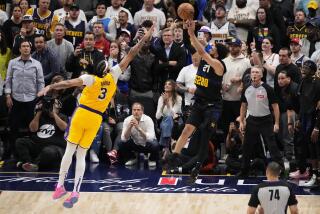From the archives: Air-raid sirens installed in Los Angeles
In January 1942, Los Angeles rushed to install air-raid sirens around the city. Many were placed atop traffic signals.
A story in the Jan. 17, 1942, Los Angeles Times reported:
Any resident of Los Angeles who has forgotten that the nation is a war will awaken with a start soon when the city tests its air-raid alarms.
Ralph T. Dorsey, chief traffic engineer for Los Angeles, vouched for this yesterday after his workmen had prepared the first two air-raid signals for installation.
The sirens will be mounted atop traffic signals at strategic locations, while others will be placed on fire stations and in localities not guarded by traffic lights.
Altogether 204 sirens will be placed throughout the city, according to Dorsey. The two mounted yesterday in the city workshops at 444 Commercial St. will be placed in service at once.
The first consignment of 45 sirens expected next week will be installed by city workmen within five days, Dorsey said.
The large traffic signals on Wilshire Blvd. will mount a one-half horsepower siren, while the smaller signals downtown will carry a one-quarter horsepower siren. They will be placed at intervals, not at every intersection.
The order calls for 100 one-half horsepower sirens and 45 one-quarter horsepower signals; 30 seven and one-half horsepower alarms and 27 three horsepower sirens. The cost is $47,000.
On Jan. 19, 1942, one of the one-quarter horsepower sirens was tested. A story in the next morning’s Los Angeles Times story reported that “the red siren, perched atop a traffic signal, was turned on at 5:15 p.m. at height of the late-afternoon traffic rush.”
“It emitted a high, piercing whine, similar to the sound of an ordinary fire or ambulance siren ....”
The same story also reported that the one-quarter horsepower sirens “are being installed in a checkboard fashion at every other downtown intersection.” Each siren covered one city block.
A photo of the two traffic signals, without Dorsey, appeared in the Jan. 17, 1942, Los Angeles Times. The image of the two college students ran in the Feb. 8, 1942, Times.
In another example of wartime precautions, one of the traffic signals Dorsey posed with is shielded by slit-masks, installed for operation during blackouts.


